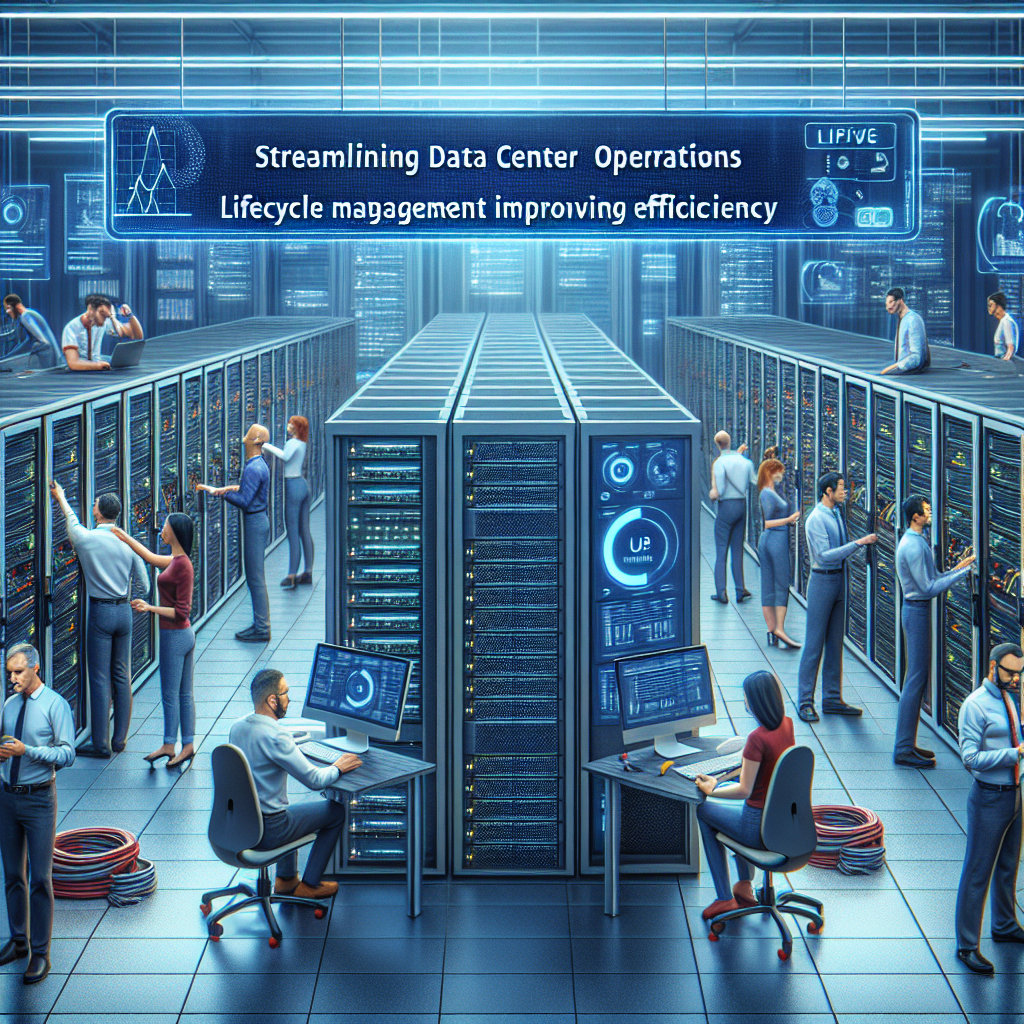In today’s fast-paced digital world, data centers play a crucial role in storing, processing, and managing massive amounts of information. With the increasing demand for cloud services, big data analytics, and advanced applications, data centers are under constant pressure to deliver high performance and reliability. To meet these demands, data center operators are constantly looking for ways to streamline operations and improve efficiency.
One effective strategy for improving data center efficiency is through lifecycle management. Lifecycle management involves the planning, implementation, and monitoring of all aspects of a data center’s infrastructure throughout its lifecycle. This includes everything from equipment procurement and installation to maintenance and decommissioning.
By implementing a comprehensive lifecycle management strategy, data center operators can optimize their operations in several key areas:
1. Equipment Procurement: Lifecycle management helps data center operators make informed decisions when purchasing new equipment. By considering factors such as performance, energy efficiency, scalability, and compatibility with existing infrastructure, operators can ensure that they are investing in the right technology for their needs.
2. Installation and Configuration: Proper installation and configuration of equipment are critical to ensuring optimal performance and reliability. Lifecycle management helps operators plan and execute installation projects efficiently, minimizing downtime and disruptions to operations.
3. Maintenance and Upgrades: Regular maintenance and upgrades are essential to keeping data center equipment running smoothly. Lifecycle management helps operators schedule maintenance tasks, track equipment performance, and plan for upgrades in a timely manner, ensuring that the data center remains operational and efficient.
4. Decommissioning and Disposal: As equipment reaches the end of its lifecycle, proper decommissioning and disposal procedures are necessary to prevent environmental damage and data security risks. Lifecycle management helps operators plan for the retirement of equipment, ensuring that it is disposed of in a responsible and secure manner.
By implementing a lifecycle management strategy, data center operators can improve efficiency in several ways. First, by optimizing equipment procurement and installation processes, operators can ensure that their data center infrastructure is well-suited to their needs, reducing the risk of costly mistakes and inefficiencies. Second, by maintaining equipment properly and planning for upgrades in advance, operators can prevent downtime and ensure that their data center remains operational at all times. Finally, by properly decommissioning equipment at the end of its lifecycle, operators can minimize environmental impact and data security risks, ensuring that their operations are sustainable and secure.
In conclusion, lifecycle management is a powerful tool for streamlining data center operations and improving efficiency. By implementing a comprehensive lifecycle management strategy, data center operators can optimize their infrastructure, reduce costs, and enhance performance, ultimately leading to a more reliable and efficient data center environment.


Leave a Reply